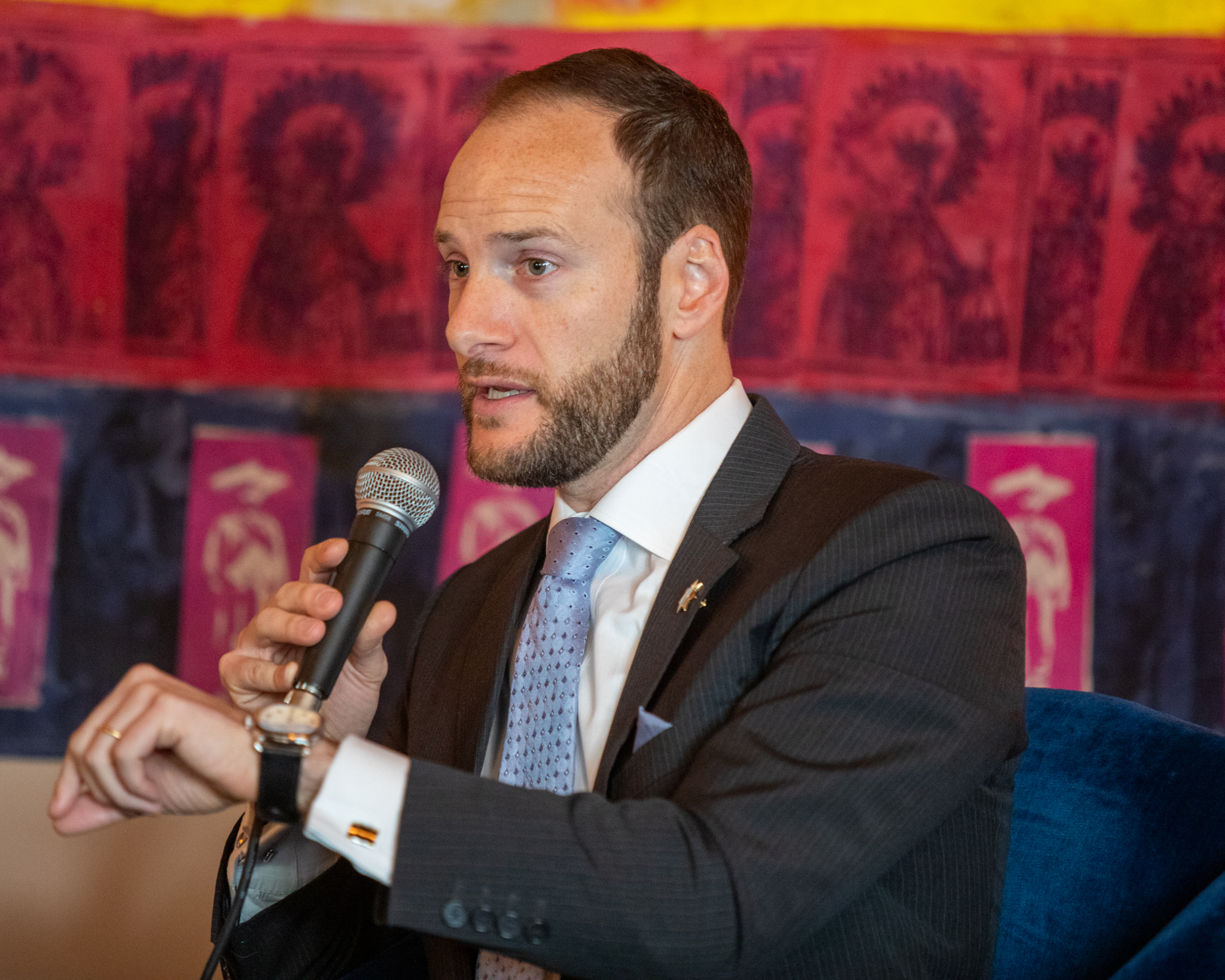

Newsom Issues Executive Order on Prison, Stops Short of Release
Governor Gavin Newsom and local officials deserve a lot of credit for their response thus far to COVID-19. The quick and aggressive response has prevented California from spiraling out of control to this point like New York has.
On Tuesday, Governor Newsom issued an executive order on state prisons “to reduce the risks of COVID-19 in correctional settings.”
For the most part, the order was limited to halting “the intake and/or transfer of inmates and youth into the state’s 35 prisons and four youth correctional facilities. Those inmates and youth will remain in county custody for the next 30 days.”
“The State of California is responding in real time and fighting hard to deploy every resource to reduce the spread of COVID-19, and we are working with our public health experts, corrections system and our local sheriff’s departments to ensure proper protocols and procedures are in place to effectively limit risks in correctional facilities,” said Governor Newsom.
The problem of course is that the inmates who remain in county custody are in no better position than those in prison. They lack access to quality medical care and are in a confined space that could serve as the perfect breeding ground for a rapid escalation of COVID-19.
Compare that response to New Jersey—where at least 1000 inmates will be released due to an agreement between the state and public defenders.
In New Jersey the stakeholders, which included the AG’s Office, Prosecutors, Public Defenders and the state branch of the ACLU, agreed “that the reduction of county jail populations, under appropriate conditions, is in the public interest to mitigate risks imposed by COVID-19.”
The ACLU-NJ reports that the “order could impact up to 1,000 people incarcerated in county jails.”
The prosecutor still has the ability to challenge “the release of specific individuals where they contend there exist significant risks to the person being released or to public safety.”
New Jersey has led the way in this respect, as no other state has agreed to release such a large number of people in its jails—this despite growing concern across the board that jail populations are vulnerable and at risk from COVID-19.
“Unprecedented times call for rethinking the normal way of doing things, and in this case, it means releasing people who pose little risk to their communities for the sake of public health and the dignity of people who are incarcerated,” ACLU-NJ Executive Director Amol Sinha said in a statement. “This is truly a landmark agreement, and one that should be held up for all states dealing with the current public health crisis.
While California fails to act, Iowa has now stepped up with “plans to expedite the release of about 700 inmates who were already determined eligible for release by the Iowa Board of Parole.
“By accelerating the release wait list, more beds will open up, which can allow the correctional facility to move inmates more easily if an outbreak does occur in a prison,” the state said.
What California has done is limit transports, and they are also halting all trials in the state for the next 60 days.
“All jury trials are suspended and continued for a period of sixty (60) days from the date of this order. Courts may conduct such a trial at an earlier date, upon a finding of good cause shown or through the use of remote technology, when appropriate,” the order from Chief Justice Tani Cantil-Sakauye reads.
But while the justice’s order takes steps to protect the public and court personnel, it leaves many in-custody defendants in the hot zone, so to speak, with limited provisions for release—and those provisions have been on a county-by-county basis.
This is the problem—without a plan to get people who do not pose a threat out of our jails and prisons, we actually end up risking our entire population.

“We know that there are many, many people in state prison who do not pose a danger to the public if released,” San Francisco DA Chesa Boudin told the Vanguard on Tuesday.
He pointed out, “There are so many people in prison, however, that keeping them there does pose a serious public health risk in the context of COVID-19. Jails and prisons pose the real risk of becoming major vectors for the spread of disease and I urge the Governor and other District Attorneys to follow the advice of medical professionals and take immediate steps to reduce the jail and prison population.”
In fact, the San Francisco DA argues in a lengthy interview with Forbes that COVID-19 probably doesn’t end without criminal justice reform.
“We have a real concern that jails could be a major vector for the spread of disease for a number of reasons,” he said, pointing out that we are not actually locking down prisons. Instead, there is daily “churn.” He explained that there is a “large number of people going in and out of jails and prisons every day, as well as the staff going in and out every day.
“Even if a prison has been shut down, there’s a minimum staff required to maintain that facility.”
The problem is, he said, “unless we reduce the prison population, we simply can’t (control the spread). All it takes is a single person coming into or going out of the jail or prison with COVID-19, and the entire jail will likely be infected. Most jails have people living in very close quarters.”
New Jersey and Iowa have recognized this fact. Governor Newsom, in liberal California, with progressive prosecutors, legislature and an Attorney General, is, however, slow to respond to this crisis—even as he has led the way in responding to the overall COVID-19 crisis.
—David M. Greenwald reporting
To sign up for our new newsletter – Everyday Injustice – https://tinyurl.com/yyultcf9







Maybe Gavin Newsom is worried about something like this happening?
https://www.thesun.co.uk/news/11245773/parolee-released-from-jail-over-coronavirus-fears-invades-home-with-serrated-knife-tells-cops-hes-womans-lover/
Oh, my!
Yeah, right? All those inmates getting released who supposedly are not harmful.
About a quarter of the CDCR population is over the age of 50. That means (A) they are low risk to re-offend and (B) high risk for COVID-19. Why not at least a targeted release?
May not be a bad idea (although around here, housing is an issue, not sure ending up in a homeless encampment is any better), but this article at least points of that ‘targeting’ takes time for reviews, evaluations when staff is limitd and stressed, and is clearly less than perfect. The welfare of the public is of concern too. With a 2-week catch-to-symptoms period, what if an entire prison population is showing no signs, but have a high infection rate, and many are then released, some with nowhere to go?
Alan (your 6:55 post)
I’d add, along the lines of your comments, early release inmates (older, as David described) might actually be at more personal risk on the outside… and, as you pointed out, perhaps not having safe ‘outside’ shelter’… the proposal is the opposite of ‘shelter in place’…
Time will tell…
Keith: Why is the one person who does that more illustrative than the 99% of them that didn’t and who didn’t die of COVID-19 as a result?
So far . . .
Yet.
. . . and, just in general, whether it be justice reform, not building ARC, getting emergency funding for one’s program (insert name here), relief for (insert name here), I’m getting really F-ing sick of damn near everyone who is trying to exploit this crisis to further their personal/political agendas. And it’s only just begun, so I expect to be driven quite insane by this by about Lockdown Day 37.
Those are pretty much the repetitive topics of the Vanguard, itself (although in an opposite direction, regarding the second example and other development proposals). That’s the way it was well-before the crisis, as well.
There are lots of other things to write about, but David might not have much interest in those topics. It’s his blog, and there’s lots of other media and sources – if interested.
Although one might be captive in their own dwelling at this time, the Internet has no such restrictions. The world doesn’t begin and end with the Vanguard, although it seems to “capture” a handful of frequent commenters (myself included) who may feel strongly about particular issues.
Well, you caught me RO. The only thing I read and my only source of information is the exalted Davis Vanguard 😐 . I really should get out more. Oh, yeah . . .
It’s a self-inflicted punishment. I should know. 🙂
Or more to-the-point, I should know “better” by now.
Oh, and in the “old days” (before the drastic reduction in the number of commenters), an article like this would have drawn a lot more attention from those who feel strongly about it.
From my perspective, passionately debating issues in which one has virtually no influence (e.g. decisions by the state, or who gets elected president) is kind of a waste of time.
True dat!
Alan and Ron:
I think you guys are missing something very important here. You guys mostly pay attention to our Davis coverage. But before this crisis probably 75% of the work of the Vanguard was on justice reform and coverage in the courts. The reality is that right now the focus on justice reform at this moment is focused on prison population – who are very very vulnerable to this pandemic. (A good example would be to look at the coverage in the Appeal, a national publication on justice reform: https://theappeal.org/). What you are calling repetitive is simply the arc of the COVID-19 story in prisons/ jails/ justice reform. Just as there is an arc of COVID-19 coverage for the city, the state, and the federal government. We have done some pretty original stuff on this, but right now, it’s hard to do stories that do not tie into COVID-19 and I think whatever publication you look at suffers the same problem.
Perfect example:
“Lawyers for California prison inmates asked a federal three-judge panel late Wednesday for an emergency order that could force state corrections officials to release thousands of inmates because of the coronavirus pandemic.”
I know neither of you are interested particularly in this issue, but this is right on the front line of news coverage and it’s very relevant.
And what happened to Newsom’s eyes in the lead photo?
Not sure about the percentage, but both Alan M. and I already noted this, in the comments. Based upon your articles and comments, it appears that some may suspect that you (and other criminal justice reform advocates) are exploiting the coronavirus to advocate for something that you support, regardless. I suspect that this is true to some degree, as well.
But again, it’s not my blog. Nor is this an issue that I focus on, as you’ve already noted.
There are several ways I could respond. The way I will choose to do is to again point out that we are simply covering the news in the area of criminal justice reform in the direction its heading. This is one of the few times I have personally written an article on this topic, so I’m not sure why your comment is directed at me.
Here’s an example of some of the type of comments you make (from above), which show your true interest:
Also, what you choose to (repetitively) cover demonstrates your interest in the first place. You go far beyond “covering the news”. This is almost purely a political blog – even in the “factual” articles.
That’s probably why your blog isn’t a primary source of news for most, according to the recent city survey.
That’s not intended as an “insult” – it’s just an acknowledgement of what this blog is. There’s nothing inherently wrong with that.
This was a commentary, it was designed as an opinion piece.